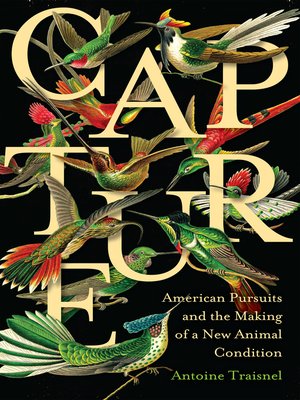
Sign up to save your library
With an OverDrive account, you can save your favorite libraries for at-a-glance information about availability. Find out more about OverDrive accounts.
Find this title in Libby, the library reading app by OverDrive.



Search for a digital library with this title
Title found at these libraries:
| Library Name | Distance |
|---|---|
| Loading... |
Reading canonical works of the nineteenth century through the modern transformation of human–animal relations
From Audubon's still-life watercolors to Muybridge's trip-wire locomotion studies, from Melville's epic chases to Poe's detective hunts, the nineteenth century witnessed a surge of artistic, literary, and scientific treatments that sought to "capture" the truth of animals at the historical moment when animals were receding from everyday view. In Capture, Antoine Traisnel reveals how the drive to contain and record disappearing animals was a central feature and organizing pursuit of the nineteenth-century U.S. cultural canon.
Capture offers a critical genealogy of the dominant representation of animals as elusive, precarious, and endangered that came to circulate widely in the nineteenth century. Traisnel argues that "capture" is deeply continuous with the projects of white settler colonialism and the biocapitalist management of nonhuman and human populations, demonstrating that the desire to capture animals in representation responded to and normalized the systemic disappearance of animals effected by unprecedented changes in the land, the rise of mass slaughter, and the new awareness of species extinction. Tracking the prototyping of biopolitical governance and capitalist modes of control, Traisnel theorizes capture as a regime of vision by which animals came to be seen, over the course of the nineteenth century, as at once unknowable and yet understood in advance—a frame by which we continue to encounter animals today.







